#books as symbols in renaissance art
Explore tagged Tumblr posts
Text
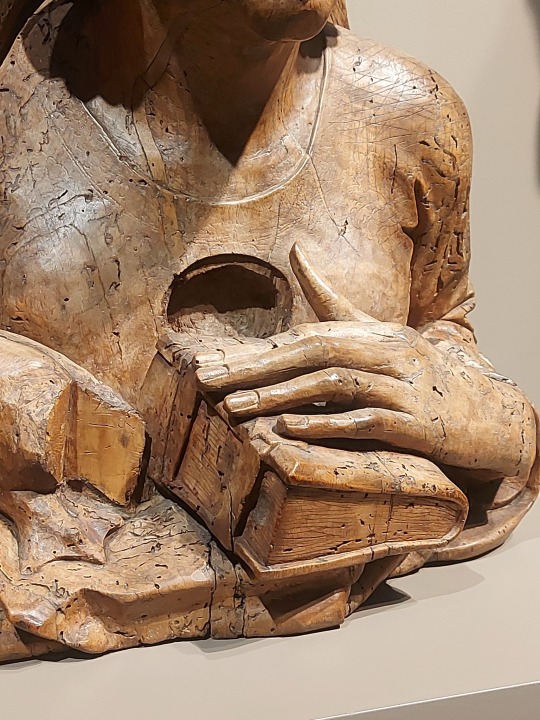
detail of book held by saint margaret in a reliquary bust from the workshop of niclaus gerhaert von leyden, c.1465 (BASIRA)
#book history#print culture#art history#BASIRA#books as symbols in renaissance art#niclaus gerhaert von leyden#religious art#reliquary art#margaret of antioch#favorites
5 notes
·
View notes
Text

1600’s celestial engraving by Athanasius Kircher
#old art#illustration#occult#witchy things#engraving#gothic#alchemy#artwork#esoteric#witchcraft#art#fine line#hedge witch#astrology#zodiac#medieval#renaissance#etching#block print#mystical#hermetic#old book#witchy aesthetic#goth#whimsigoth#secret society#old god#symbolism#magick#pagan
104 notes
·
View notes
Text
Every time you are in the modern and contemporary art section of a museum and think angrily “why does this deserve to be in a museum???” I encourage you to actually go and answer that question.
Look at the name of the piece and when it was made, do those give you any clues? What about what it was made from? Google the artist, what in their life would have caused them to make it, what did they say about it? It’s worth it.
#I have a degree in art history and museums and like yeah there are lots of valid criticisms for museums as a whole and contemporary art#but it looking easy to make or ugly or you not understanding it at first glance are literally pre school criticisms#and wanting to go back to Renaissance art and it’s never really Renaissance art is literally so right wing#media literacy applies to fine art not just your children’s cartoons and published fanfic xoxo#and yes I get conceptual art is really hard to stomach if you don’t understand what it stands for but what it stands for is so easy to get#plus if you are looking at a renaissance painting I assure you that you have no clue what’s going on in that really either#it’s just like books you are looking for symbolism and themes#but you are gonna be unaware of commonly understood symbolism from any point till probably the 1980s
8 notes
·
View notes
Text
Art Student!Choso
Renaissance: worship
Word Count: 5.4k Contents: 18+ mdni, plot with smut, mostly fluffy, direct continuation of the part 5 smau, and concludes pre-relationship Choso's story, not proofread so idk how much sense this makes, let me know if it’s complete bs and I’ll redo it or something
You’re staring at the most beautiful mural you think has ever been created. It’s made up of harsh strokes of ash, curving and spiralling into one another, sprawling across the entire back wall of the gym. The smudges and the streaks breeze from corner to corner, bouncing along the edges as they create layers of shadows which seem so thick you could feel it from where you stand.
There, in the centre, you can make out a face. It’s contorted, mouth stretched inhumanly, eyes bulging and threatening to pop out. Fragmented and clawing itself, tearing skin and pulling until its face morphs into something you can’t quite make out. Dissolving into the fray, with the stark chalk, it spirals into frenzied strokes, suffocating itself.
A gasp leaves you when you step back, taking more of it in at once, and you see amidst the smoke and the chaos, symbols, jagged and torn up. They make up even more faces, just as contorted and as uncanny, all stretched out in silent screams that pierce your soul and render your knees weak.
It’s haunting.
You had no idea you would walk in to find this when you were searching for Choso. And when you meet his eyes from above, leaning against the railing, you think you might actually fall to your knees. It’s the same eyes that match the big ones on the wall, both equally broken, accusing and full of heat as it never wavers from yours.
There are so many things left unsaid, things that are desperate to get out, to be screamed at him so he’ll understand, so he’ll know. But only silence remains.
Choso doesn’t say anything, just lets the moonlight streaming from the windows encase you both in half light, half-darkness. You can’t see the smudges on his hands, but you can see the yearning in his eyes, like he too has so much to say, so much for you to understand and accept.
Click.
Both of your eyes dart to the entrance, there’s a security guard, holding a flashlight, aimed right you. There’s no way to escape. That’s what your thumping heart is telling you; you’ve been caught. And you haven’t done anything wrong.
“Hey! Did you do this?” He yells.
You’re rendered speechless, frozen from the realisation that there’s no way out of this. Without looking at him, can’t bear to discover what expression he’s wearing now that it’s all unravelling between you, you walk to the guard and let him drag you of there.
You don’t look back.
——
“What would possess you to vandalise private property?” The Dean questions.
His bald head is shiny, and the light’s reflection is all you can focus on as he thumps his fist against the mahogany desk separating you both. Thank God, too, because by the looks of that bulging vein on his forehead, he's pretty keen on giving you a lesson or two. It’s just you and him in his stately, stuffy office. The walls are lined with tall, dark wood bookshelves, which in turn are filled with old, leather-bound books in perfect condition, not a single dust in sight.
“I’m sorry.”
“It goes without saying, I’m sure, that I’m disappointed in you,” he ignores you, voice gruff and measured, all condescending and pretentious. You’re convinced that’s not even his natural accent. “You have the talent, the potential, to do anything with your gifts. Your works have won many awards, and you could one day find them in museums or galleries across the world. Instead, this —this is how you choose to leave your mark?”
The chair squeaks when you shift uncomfortably, and your eyes choose to scan his meticulous desk, as opposed to his beady ones. There’s not a single paper angled wrong, no pens misaligned, not a smudge or even a water mark.
“You’ve disgraced this fine institution. Our beloved Eden University for the Excellent has stood as a beacon for ambition, sophistication and innovation! And with every act of ‘artistic rebellion’ with your ‘cursed death paintings’, or the like, you have threatened everything we have built for centuries!”
You could try and defend yourself, could rebuff the accusations since you are, of course, innocent. But, well, the evidence is damning: you were at the scene of the crime, you’re an art student, you have attended practically every protest on campus, have liked posts from Cursed Womb’s fan-pages, and damn it, you had paint all over your shirt and hands.
You’re fucked.
He leans back in his chair, sighing as he folds his glasses onto the desk. “There are no excuses; none I will accept. Therefore, it is with the deepest regret that I hereby — “
The door slams open.
You both jump.
“Dean Hanami,” a sneer projects through the office and you recognise it immediately as belonging to a guy that knocked on your door and glared at you as if you were dirt on his shoe. “We have much to discuss.”
When you twist in your seat, you’re alarmed to find three men: Sukuna in a newer looking jacket than you remembered, an old man in a suit, and a guy you haven’t seen in almost two weeks.
Choso’s not looking at you, he’s not even entering the room, choosing instead to hang around by the doorway.
“Mr. Ryomen, I am in the middle of a meeting,” the Dean splutters.
Sukuna pokes your shoulder with a pen he picked up from the desk, looking over at you with complete disgust, like you’re a little cockroach. Still as rude as ever, he’s signalling for you to leave and as you look between the two men, one much older than the other, you choose to go with your instincts and rush out of there.
“This is how it’s going to work,” he drawls, sliding into your seat and snapping his fingers at the man in a suit, “you’re going to give back everything I want, and you’re going to let this Cursed Womb farce go.”
The last thing you hear is the sheer humiliation of the Dean’s defeated stammering. You close the door behind you.
Without looking at Choso, you walk down the hallway.
“Y/n, we should talk,” he follows beside you.
“Now you want to talk?” You sigh. You know you’re not being fair. Counting to ten, you try a softer approach. “Listen, Choso, it's been a long morning. Can we have this talk somewhere private? These hallways are so depressing.”
He nods, his pigtails moving with him. Wordlessly, he leads you outside, to his parked car, it’s all shiny and sleek, classic Ryomen money, and you get into the passenger seat.
It’s odd being in such close proximity with him when he’s avoided you for so long, but you try to get comfortable regardless, ignoring the elephant in the room. There’s a Cursed Womb sized hole between you and there’s so much to be said but you’re afraid you’ll push him, that you’ll say the wrong thing and everything will be for nought; you’ll go back to being strangers, passing each other by, just like last year.
And, whatever you feel for him, you just can’t let that happen.
“Choso,” you begin, voice soft, “what happened? What happened between us?”
Driving, he doesn’t dare look at you, can only chew on the inside of his cheek before seemingly deciding on the right words. “I liked you. From the very beginning, I liked you. People either like me ‘cause of my family or 'cause of rumours, but you’re one of the very few people that actually reached out, saw me as an equal.”
You’re silent. He’s opening up in a way he has never before and you don’t dare disturb his flow, like one would watch a Master at work. Everything about him is compelling, the whites of his knuckles as he grips the steering wheel harder than he should, the furrow of his brows as he thinks hard, the way his gaze slides over to you, just not meeting your eyes, and even the way he studies you, in just your thin jumper and jeans and turns up the heater without asking.
Trees fly by, everything a blur as you keep your gaze fixed solely on him. He drives pretty smoothly, unlike you. You're always pressed right up against the wheel, eyes darting to every mirror like a car would appear in the millisecond you looked away. But him...he drives like it's second nature, with one hand on the wheel and the other on the gear stick.
“Despite me not being very open and particularly approachable I guess, you still made the effort to reach out, to include me in discussions, to ask if I’m coming to class — even lecturers have stopped asking. And you’re very smart! I like how passionate you are, you’re so full of great ideas, practically beaming with them. You never lose your optimism even when your art gets critiqued too harshly.”
This is the first time anyone’s ever described you like this, like he appreciates you by pure virtue of your existence and the way he sees your hard work, the strength it takes to get back up that you hadn’t recognised in yourself -- it feels like the way one would appreciate Starry Night.
You can tell he practised this speech.
“But,” there’s a tremble in his voice and it makes your hand twitch, “you don't like me. Not like how I like you. And it makes me upset. Because you're so great and nice and pretty. Not that I like you because of your appearance, even though you have a very nice body. I mean that respectfully! Okay, actually just forget I said that. I like you for lots of different reasons. And I've been trying to get you to see me as more than your classmate or just your friend. But it's all pointless because you like Cursed Womb.”
“Choso, you are Cursed Womb.”
The car screeches to a halt.
His hand flies out, pressing hard on your chest to stop you from flying forward. Thank goodness you’re wearing your seatbelt. And thank goodness the road is empty.
“What the fuck!”
“Sorry!” He pants. “Sorry. I’m sorry. You caught me by surprise.”
Like you’ve been possessed, you laugh. It’s more a cackle than anything else to be honest, but the look of utter shock and disbelief on his face is making you tear up, your sides hurting as you cradle them. “Oh my god, Choso, you should have seen your face. HA!”
He’s panicking, hands waving in the air as he tries to decide between lifting your hair up to inspect for damage and going to the steering wheel so he can drive off to safety, where the chances of a car accident caused by your blunt mouth are slim. Conflicted, he decides to keep them in his lap as he winces at your chortles. You’re finding this way too funny.
“You’re being mean,” he pouts.
Wiping tears from your eyes, you’re desperately trying to calm down, trying to school your features into something more neutral or, better yet, something serious so you can have a mature, adult conversation. But he’s just so adorable you can’t help yourself.
“Sorry, Choso,” you playfully frown at him, making a puppy dog pout so he’ll cave in. “But be honest here, sweetheart. You didn’t actually think you were slick, did you?”
Like a child, he smacks his steering wheel, all grumpy and upset. “No one else knew.”
“That’s ‘cause no one else tried to know. Sure, people were investigating, trying to piece together clues, but no one really wanted to know; the mystery was addictive, and that’s what peopled liked. But you think you’re the only one who pays attention? I watch you all the time. Plus, your family’s presence today was concrete proof; Sukuna would never do that just because you asked, right? And on top of all of that, you’re not a very good liar, sweet Choso,” you coo.
He stutters, “B-but you never said. You kept talking about him l-like —"
“Like he’s not you?” You finish for him.
“Yes! Even that night when I asked you to hang out, you didn’t want to go with me but when I mentioned the painting, you said yes.”
Your hand reaches out to play with a loose lock of hair from his messy pigtails and he lets you, his eyes flutter shut when your hand grazes his cheek. Heart clenching, you sigh again. “I was genuinely busy, Choso. But when you mentioned that ��your friend’ painted again, I knew that meant trouble. What you do is dangerous, and I wanted to make sure everything was okay.”
“What about the other time when you didn’t want to have lunch with me? And you just wanted to work?”
You giggle, playfully pulling at his hair, and he has to pretend he’s not getting hard. “Choso, you do realise we have to balance our project on top of our schoolwork, right? Like we have to actually study and work, to meet deadlines?”
Choso pouts again and you smush your thumb against his plump lips, easing away the tension there. All muffled, he whines, “But I wanted to have lunch with you!”
“And we enjoyed sandwiches, did we not? Which by the way, you never paid me back for. But eh, that's okay. Just treat me out next time -- I'm a broke college student.”
He groans, pulling away to smack his head against the wheel. It honks and you laugh again. He’s clearly embarrassed and frustrated and he doesn’t know where to begin, so you try for him.
“Choso, sweetheart,” you rub his back, “don’t be upset. I’ll be completely honest: I was messing with you. I kinda just wanted to see how far things will go. I mean, I knew as soon as you told me he’s your ‘friend’ that you were Cursed Womb. It’s such an obvious throwaway; I hope you weren’t feeling very proud of yourself.”
Scrunching his nose at you, he sinks back into his seat. The road is still empty, and he doesn’t seem to have any desire to drive off yet. So, you let him take it all in, rubbing his shoulder in pity for the poor guy who was clearly so proud of himself for keeping such a huge secret from everyone.
“What’s gonna happen with the Dean?” You just realised technically you were expelled or were going to be expelled. No longer a student, you aren’t sure what you would do as a non-student — would you even make a very inspirational contributive member of society?
What’s next?
Taxes and mortgages?
You shudder.
Choso grabs your hand, holding it in his lap as he fiddles with your rings, clinking them with his own. His nails are painted black in true male art student fashion and his fingers are so beautifully long and slender you’re not afraid to admit that you’ve stared at them a little too long during clay sculpting class.
“The family’s going to take care of it. Make it go away like they did when Sukuna beat up some guy who pushed Yuji. Or when I got caught by some other security guard.”
You nodded. “Where does that leave us?”
“Us?”
“There is an us, right, Choso?”
He fiddles with your ring finger, and you try really hard not to notice the hearts in his eyes. “Do you want there to be us? It’s not because I’m Cursed Womb, is it?”
Of course, you don’t blame him for feeling this way; you played around too much, gave him too much power when you really should have made the decisions to begin with, forced him to confront everything that was unspoken between you much sooner. Then there wouldn’t be this awkward energy that's holding him back from meeting your eyes.
“Choso, I never liked you because you were Cursed Womb. Sure, I liked Cursed Womb. I stand by everything I said — he’s cool, he stands for what’s right, he sends a message and isn’t afraid to put his art out there to be critiqued by the masses. How many people can say that? But I liked him like one likes a pop star! You, on the other hand, I like you as you are. All shy and sweet and considerate. And I know the picture of me was from you, by the way.”
He opens his mouth to argue, and you shut him up with a stern look.
“We’re project partners, Choso!” You laugh. “I’ve seen your handwriting and the way you write your Cs, you silly silly boy.”
“But you teased me anyways."
With a shrug, you explain, "You liked it."
And then he’s kissing you.
His seatbelt is off, and you’re being pressed back into your seat, his hands cradling your face. It’s soft and sweet and gentle and it’s so Choso you can only moan in his mouth. He’s holding you like the two lovers of Rodin, with so much care, so much passion, it's leaving you breathless. You feel so much warmth and adoration through every lick of his tongue, every nip of his teeth and every moan of your name he’s breathing into you.
You push him back, taking your belt off so you can climb into his lap whilst he pushes the seat back. He kisses down your neck, sucking your pulse point and gripping your hip as if he’s scared you’re just a figment of his imagination. And when you grind down on his hard length, he moans your name again. You’re soaking.
“I’m sorry for teasing you too much.”
With tentative hands, he lifts your sweater up your stomach, searching your eyes for any resistance. You smile and take it off for him. He wastes no time sucking a tit, flicking the hard bud with his tongue and you’re gripping his pigtails. That makes him groan.
“I’ll forgive you if you do one thing for me,” his words are garbled, on account of him trying to swallow the entire globe of your breast, cheeks all puffed up, and you can’t help but press a kiss against his forehead. “Call me Cho again.”
“What?” His teeth graze your sensitive nipple and you arch into him, eyes crossing.
“You only call me Cho when we’re like this, touching in a way we shouldn’t.”
“Do I?” Grinding down on his dick, you tug a pigtail back so you can tilt his face away from your wet tits and back to your mouth. You kiss him again, craving his taste, his warmth. “Sorry…Cho.”
He bucks into your clothed core, straight up to your clit and you’re moaning into each other’s mouths. This isn’t enough, you both need more. Neither of you even care that you’re on the side of a road and it’s midday.
“I want you,” he whispers, and he’s tearing up, the frustration building up to a point where he’s clawing your jeans off and burying his face between your tits and inhaling deep. “Can I? Can I have you?”
“Of course, Cho. I’m yours,” you kiss his hair. “You can do whatever you want with me, baby.”
Maybe you shouldn’t have said that.
Because the next thing you know, the seat is folding back and you’re being thrown onto the seat, facing the plush roof. He’s tugging your jeans down, pulling the material as if it’s singlehandedly his worst enemy. You can only rub his head as he frantically looks between your face, your tits and your panties like he doesn’t know where to begin. He’s desperately asking for permission, for guidance.
“Choso, we can do whatever you want, just take your time.” And then, as an afterthought, you add, “Although, you shouldn’t take too long since we are outside. If we get caught, I’m not sure your family can take care of the charges we’ll face.”
He nods and then with dark, unfocused eyes, he shoves his face between your leg as he kneels on the floor, spreading your thighs with his strong arms. Sniffing is all he does, inhaling deeply and moaning. You blush, pushing his hair from his face. And, as if the urge has gotten too much, he pushes your panties to the side and licks a strip up your slit, from quivering hole to the clit.
Your back arches off the seat.
Moans and groans escape you, shaky breaths fanning the air as he sucks your clit, mumbling your name and the vibrations leaves you lightheaded.
“Tastes so good. Knew you would taste so good.” He pushes in a finger inside and he groans with you when he wriggles it. “So wet, baby. You’re so hot a-and wet and I want to stay here forever.”
He curls his fingers inside, rubbing against that spot inside of you that has you gushing cream all over his mouth, and he laps it up like he’s starved. Just as a car drives past and he dives deeper into you, you find yourself cumming all over his mouth and fingers, clutching his pigtails harder.
"Fuuuuuck, don't stop, Cho!" You ride out your orgasm on his face, spreading your wetness all over his chin and his cheeks, clit bumping against his nose.
Shuffling up, something wet and hard traces your lips. It’s salty. You don’t hesitate to widen your jaw, letting him push his hot and hard length into your throat. It’s an awkward angle, with you laid not fully back and him having to crouch down, but you manage a few suckles before he gets frustrated and embarrassed, and he climbs back down to pet at your pussy.
"That's just going to have to wait later, I guess," you chuckle.
A blush blanketing his cheeks, he nods and strokes his dick. He must have taken it out when he was licking you. It's long and hard and your body remembers the feel of it in your hands. And Monet! His tip is flushed red, leaking cum like a faucet. How adorable.
You see him lining his beautiful cock to your quivering hole, but you have to press a hand against his chest to still him. “Tut tut, Cho. Do I need to lecture you on the importance of safe sex, silly boy?”
He blushes and pats his pockets with frantic, panicked movements. You sigh. You didn’t bring one either.
“Well, you’re not allowed inside without a condom,” you mutter to his cock, telling it off as if it’s responsible for its owner irresponsibility. “I mean, really, Choso. You’re a grown man, a college student! You should always have condoms, silly.”
“I didn’t think we’d ever be together so I didn’t buy any,” he mumbles, laying down on you so he can hide his sheepish expression in your shoulder.
The implication warms your chest, making you pout and rub his back. You coo, “Aw, did my baby not want to fuck anyone else? Just me?”
Pushed to his limit, he bites your neck and then quickly soothes it with his tongue as if upset at himself for hurting you. But it’s you who feels the most guilt; you played around too much, teased him too far, and now his hips are making short thrusts against your pussy. He just can’t help himself. It’s as if the magnetic pull of your cunt is too much for a weak man like him. You’re going to have to work very hard to earn his forgiveness even if he’s willingly thrown it at you.
Starting, of course, by wrapping your legs around his hips and pressing him closer. You whisper, “Make yourself cum on my pussy, Cho.”
He groans. Maybe it’s the seductive way you ordered him to, the vulgar term you used, or perhaps it’s the fact that you called him a nickname he loves to hear. Well, whatever it is, it’s making him whimper in your ear as he thrusts against your lips, coating his length with your juices. His tip bumps against your clit and you both moan.
“I-I missed you, y/n!” He cries in your ear, warm breath tickling your skin.
Again and again, he thrusts, still clinging onto you and holding you close. You can feel his desperation, sincerity, and his pre-cum all seeping into your skin. Rolling back, your eyes disappear — this is supposed to be for him, and yet you’re panting too, holding him tight, shirt threatening to rip under your claws.
The fact that you’re naked and he isn’t is making you sensitive all over, from the way your nipples are rubbing against his chest and how he pinches at one all the way to the mumbling of your name, like a mantra, against your neck.
You’re going to cum too.
“Ngh, Cho! Keep going!”
He must have liked that because his thrusting gets more frantic, his cock head meeting your clit again and again and you’re both nearing your high. Your nails dig into his back and he bites your neck to stifle the broken moan that escapes him. Hot ropes of cum paint your stomach and it makes you arch your back once more, eyes closing shut.
"So warm ngh!" He groans into your ear.
Hips stuttering, he drags out his orgasm like his body can’t help himself and a beat or two passes. He falls on top of you, still muttering your name like his brain has short-circuited and it’s all that’s left in there.
“You like me better than Cursed Womb, right?”
You laugh. “Cho, you silly man. You’re the same person.”
Choso pushes himself up onto his elbows, slightly out of breath and dazed, a blush highlighting his face tattoo. You kiss him on the nose which brings out what sounds like a mewl from him. He copies the movement, and it tickles you. That makes him smile, still panting.
“I know, but I want to know who you like better,” he licks a bead of sweat from your forehead and you have to smack his back.
Sighing, you push him off, concerned over the fact that you’re naked and in a public space. He lets you scramble back to your seat, fixing your panties and leggings and he hands you your jumper. All in silence, you get settled back in.
He starts the engine, looking a little upset and you have to still his hand with yours. Words aren’t really enough, you know that. So, the only thing to do is to show him.
“Take us to my place, Cho.”
—
He’s confused, head tilting and brows scrunched together like a little puppy as you lead him to your dorm room. Whereas you’re practically buzzing with excitement, struggling to get the keys in due to your shaking hands. But you manage and you welcome him in.
It’s the first time he’s been inside your place — there wasn’t a particular reason why you waited, it was really just because his place is bigger and cooler and generally a much better place to work in.
Despite it being a pretty standard room, he’s marvelling at the space, eyeing the pictures of your friends strewn across the walls, the fairy lights and the open journal on the table full of your watercolour works. Choso looks like he just entered Santa’s workshop, and you giggle as you press your face in his back, hugging him and swaying you guys side to side.
“Sorry about the mess, Cho. I didn’t know you’d come over.”
He holds your hands, swaying with you, but his focus is on only one thing.
There, on your easel, stationed by the window for natural lighting, is a sketch. The lines are messy and criss-crossing, overlapping each other, the lead of the pencil unravelling to create a face loss in thought. It’s tilting its head as its own creation, examining the angles and the proportions, and you can tell it’s completely entranced in its work, losing grip with reality and wholly immersed in their own imagination.
It’s the kind of expression you’ve decided is most beautiful in all your years of looking and sketching and studying. In all the models, in all the strangers, and in all the works of art you’ve come across, only one figure has captivated you as much it has.
“Recognise him, Cho Cho?”
Despite the teasing tone of your voice, you’re actually pretty nervous. This has never been a problem for you; you’ve presented your work to countless of people, by virtue of being an art student, you’ve consented to being ripped apart again and again. But this time, you’re feeling a certain kind of insecurity you never have before.
“Do you like it?”
“This is me?” He breathes out.
You bury your face harder in his back, feeling a blush creeping up. “Yeah, Cho. I started it back in first year. I never got to finish it because, well, we’re art students and we all have ADHD or whatever. But when we became project partners, I’ve been adding to it, adding lines and details for every time I noticed something new about you. In fact, I was working on it that night you asked me to hang out and I almost turned you down. Sorry about by the way, baby.”
Waving a hand over the general area, you explain further, "At the end of first year, you got that face tattoo, and I struggled all summer adding it in because I only saw it once and wanted to recreate it from pure memory. But I couldn't ever seem to get the proportions right."
"Y-you started drawing me in first year?"
Pressing a kiss to his back and smiling at the flex of his muscles, you think back to a memory. "It wasn't like I was obsessed with you, or anything creepy, I swear. It's just that, you're a pretty handsome dude. The List agrees and well, when I first saw you in the lecture hall, I thought wow, someone needs to capture that guy in a drawing or something. And you know how us artists work — we develop fixations. I guess, you could say you've been my on and off one for a year now."
That was a lot of words and you’re not sure he registered any of it because of how silent he is, but then he’s clasping your hands tightly. And you’re shocked into silence when something cold slides down one of your fingers. On your left hand. Your ring finger.
“Cho?”
“I think I’m in love with you,” he shakily whispers.
You want to laugh — it’s such a sudden admission and you’re fairly convinced it’s just that post-nut high. But the way he says it, the way it’s so serious, so real makes you pull away.
He turns, desperate to see your face. And with another whisper, he admits, “I have one of you too.”
“What?”
“I painted a portrait of you. In my place.”
It strikes you there. You remember. The painting with the tarp over it. That was of you, and he hid it because you were coming over. With a grin, you raise your hand up to eye the golden signet ring on your finger, way too big and threatening to fall off if you don’t hold it tight.
“We’re a pretty cool duo, aren’t we?”
Choso falls to his knees, pigtails bouncing, an expression of desperation and torment written all over it. He's never looked more beautiful staring up at you. "Please let me be your boyfriend!"
You laugh again, hands on your hips as you shake your head in disbelief. Rolling your eyes playfully, you respond with, "Alright, I guess I can grant you that one wish. Actually, since you gave me two orgasms, I'll give you another one."
He reaches for your hand with his eyes closed and you let him press it against his face. Cupping his cheek, your smile drops and you feel a fire burning inside and explode in your chest when he presses a distressed kiss to your wrist, full of panic like his brain is malfunctioning and he can't settle on one thought or feeling.
Then, his eyelids fly open and meet yours with a clarity that has never been there. Never. Not even since first year when you made eye contact in passing and you couldn't get his face out of your mind. And it's like all the anguish you saw that night is gone, the chalk mural fading from view.
More certain than ever, you know he'll give you all the opportunities you need to finish your portrait of him, and every new one you'll make. And your project will be renewed with a deeper level of teamwork, because you've transcended the definitions of your connection.
“I want to eat you out again.”
And well, who are you to say no to a man on his knees?
#jjk x reader#jjk choso#jjk smut#choso x reader#jjk fluff#choso smut#choso fluff#jjk drabble#jjk fic#choso drabble#modern au
754 notes
·
View notes
Text
As my childhood reached its autumn and came to an end, the winter storm of pubescence came crashing down upon me like a tree through the roof of a rustic cabin. Fortunately the cabin in this case can be said to represent only my good sense, and not, as is perhaps more common, my good looks.
This may be most acutely demonstrated by my choice of magnum opus for my boarding school's oil painting final—a choice which has haunted me to this day. I worked obsessively and secretly for weeks. The glory and subtlety of my muse could not be despoiled by some philistine's gaze. For this reason I elected to frame my work with heavy curtains.
I became obsessive as to the particulars of my subject matter. No detail was too small. I learned to paint folds of fabric like a Renaissance master, I studied early 19th-century wigs and hairstyles, I sent away to a (better-equipped) institute¹ for a book on military buttons. I made dozens of preparatory sketches. Finally, The Day Of The Great Unveiling was upon me.
When, with a dramatic flourish, I yanked back the curtain, I was greeted, not as I expected—not as I had hoped—not as I should have been—not with cries of delight, but with gasps of horror and revulsion.
Before the assembled crowd of faculty, students, and parents, nearly life-sized, was a portrait of the emperor Napoleon Bonaparte, boldy astride the buttocks of the Duke of Wellington, who knelt on hands and knees beneath him. Napoleon stared straight ahead, his face alight with that mixture of severity and delight in conquest that suffuses his best portraits. The Duke's head was turned slightly towards the viewer, as if he were perhaps aware of their presence. His cheeks were flushed, his mouth ajar in an "Oh!" of surprise, but otherwise, he was virtually the same as in Lawrence's portrait.
Now, one might assume the cabin of my reason to be completely crushed, but I had exercised certain discretion in the portrayal of my subjects. Both were fully clothed, even unto tricorn hat. I had neglected only breeches, but this omission was hardly remarkable, let alone obscene, due to the length of the then-fashionable frock coats². Only a tiny triangle of flesh was visible between top of garter and hem of coat. Despite this tasteful discretion, and implicit reference to centuries of symbolism in Western portraiture, my audience was, as previously stated, appalled.
I thought their horror could not be increased, until with incredulity, the art master read the title: "Napoleon Comes Again: The Emperor's Revenge". It goes almost without saying, that I was rapidly and unjustly expelled from the academy. My pater familias responded in kind, granting me the frankly miserly sum of fifty thousand pounds, on the condition that I never write to, speak to, or otherwise contact him or any member of my family.
All of this goes to explain how I find myself penniless in this desolate town on the Western edge of Montana. Brother, can you spare me a dime?
¹Perhaps they would have appreciated me. Perhaps all this could've been averted.
²See! See! I told you I did my research
240 notes
·
View notes
Text
Here's some of the @jstor articles I've found really interesting in this line of study:
From my gender/sex variance studies
Erecting Sex: Hermaphrodites and the Medieval Science of Surgery
Mary or Michael? Saint-Switching, Gender, and Sanctity in a Medieval Miracle of Childbirth
The Image of the Androgyne: Some Uses of a Symbol in Earliest Christianity
Transvestites in the Middle Ages
Two Cases Of Female Cross-Undressing In Medieval Art And Literature
Concerning Sex Changes: The Cultural Significance of a Renaissance Medical Polemic
Relating to disability
Sitting on the Sidelines: Disability in Malory
A Dwarf in King Arthur's Court: Perceiving Disability in Arthurian Romance
Disability and Dreams in the Medieval Icelandic Sagas
The Disabled and the Monstrous: Examples from Medieval Spain
Relating to sexuality
Sexual Fluidity “Before Sex"
The Disclosure of Sodomy in Cleanness
"Be more strange and bold": Kissing Lepers and Female Same-Sex Desire in "The Book of Margery Kempe
I will continue to update this list of sources as I find pertinent articles!
Your mileage may vary on these, not all of these have the most tactful or respectful dialogues but I found them interesting.
871 notes
·
View notes
Text
The Beauty of Botticelli & The Beauty of Will Graham ˗ˏˋ ♡ ˎˊ˗


Hannibal’s first instinct upon seeing Will is how unique and different he is from the usual people he interacts with behind his persona. A way Hannibal also fell for him is with the physical appearance of Will Graham. As seen in the show Will isn't known for his looks but for how he doesn't get along with others. Even in the book, he's given a very so-so description of how he's seen by others as average or “not very handsome” as said by the red dragon in the book.
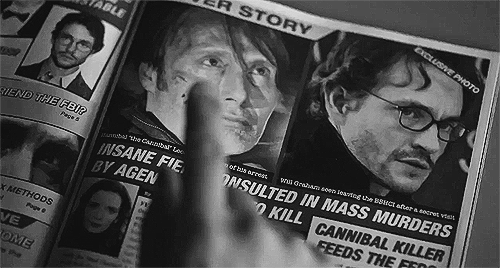
This is why I am examining the looks and appearance of Will Graham from the show only, as it is its own medium compared to the book. Will is not an average but an attractive man by looks alone thanks to Hugh Dancy. It was a factor that stuck out to me as I watched the show. With how the light shadows him and his startling pale skin and blue eyes. He reminded me of beauty only found in the paintings of old masters of Europe.
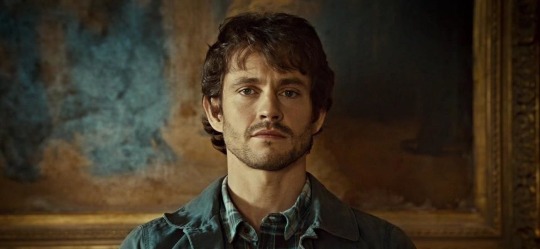
There are a myriad of reasons shown in the show but I will focus on what I see from an outside perspective into Hannibal's interests and thinking mixed in with my own.

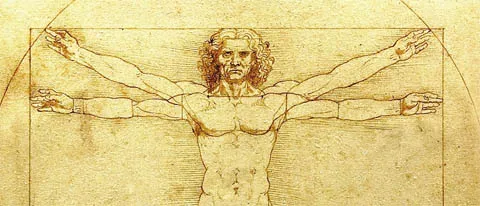
Hannibal as we know likes Europe and favors the arts above all, looking through life with a gruesome but academic lens. Will is the personification of all the arts and humanities he holds so valuable. Will’s beauty transcends these periods and fits them. In morals and looks, Will has it all and is perfect in Hannibal's eyes.
His Vitruvian man, as this user on Tumblr, keenly pointed out. Hannibal is an academic and thinker at heart, he romanticizes Will Graham by his beauty being magnified by his thinking and his deep empathy encroaching on everything he touches. Hannibal's way of absorbing and showing love is embodied in the way he kills and talks to Will through veils of academic conversations with him. Hannibal has never felt nor something strongly other than to kill, which makes his feelings for Will blur in this messy dance of courtship.
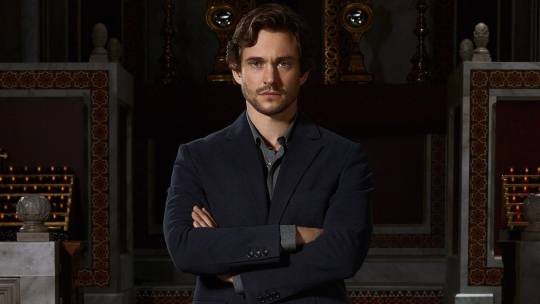
First Will could be examined based on his features and personality, in a way examining him on how most people perceive him.
Will is a man who stands at average height with light blue eyes. He has a lean, masculine beauty that can easily mesmerize. His eyes, a deep, intense shade of blue, spark with intelligence and wit. With his tousled dark brown curls and strong, angular features, he has soft but masculine features. He has a lean build with pale skin. He commands attention in a room even with how he speaks rarely to draw attention to himself. He has a scruffy beard along his sharp jaw and an air of unsettledness to most people. It is radiated more by his lack of social interaction and often bored tone of speaking. He is our brooding protagonist with a deep and sensitive soul. He often rocks a disheveled yet charming style. His intense gaze and commanding presence give him an undeniable allure on-screen. A man who feels too much and is wrapped up trying to not let himself drown in it, saving lives.
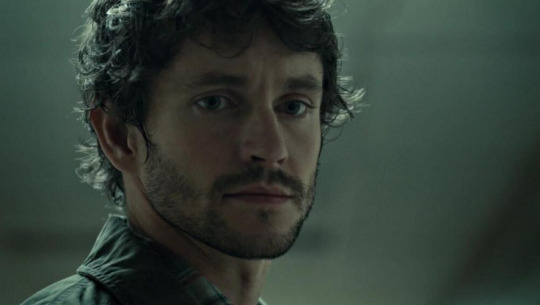
Will is brave in the face of adversity no matter if it's on both sides or in his field, even as he is chipped away or broken down who he is at his core remains.
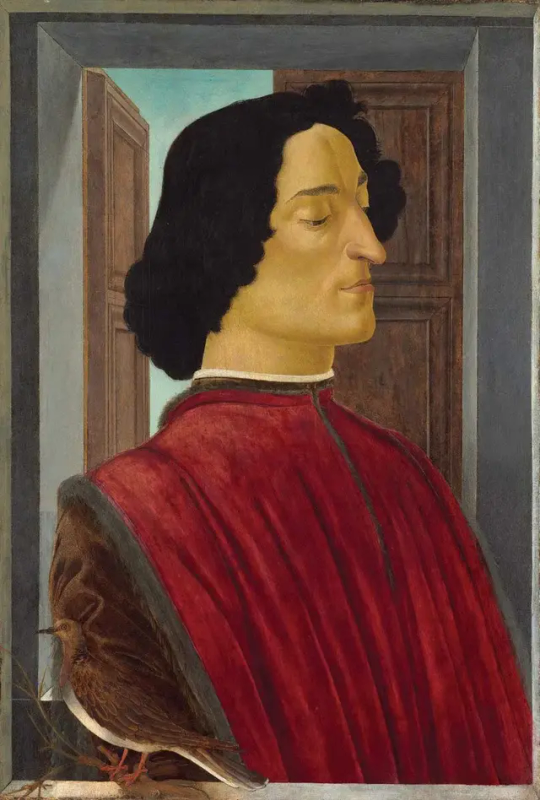

Will has features that were the beauty standard of both the medieval and Renaissance period. The Renaissance and medieval beauty standards for men concerning blue eyes and dark curls varied but were generally associated with nobility, strength, and a sense of mystery. During these periods, blue eyes were seen as captivating and intense, while dark curls were considered masculine and powerful. This combination of traits was often associated with warriors, heroes, and leaders. It was believed that these features suggested a deep, complex persona and attracted attention and admiration.
The beauty standard for men during the Renaissance and medieval periods was influenced by ancient Greek and Roman ideals of masculinity. Blue eyes and dark curls were considered attractive features, symbolizing youth and strength. It can be pointed out that Hannibal has a love of Classic Antiquity. During the Renaissance, which lasted from the 14th to the 17th century, the focus shifted towards humanism and the individual, and the ideal man was depicted as well-balanced, well-built, and well-groomed, often with light eyes and dark, curly hair.
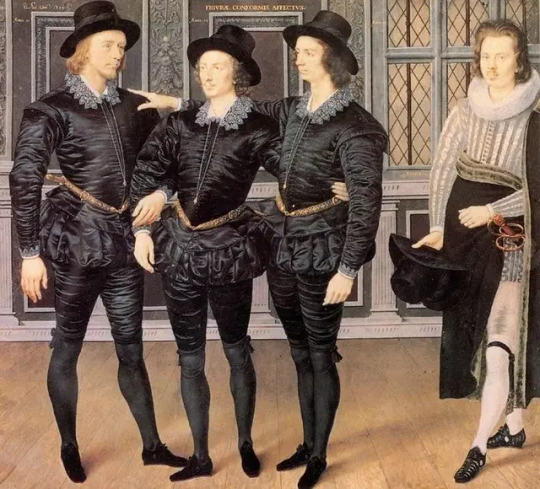
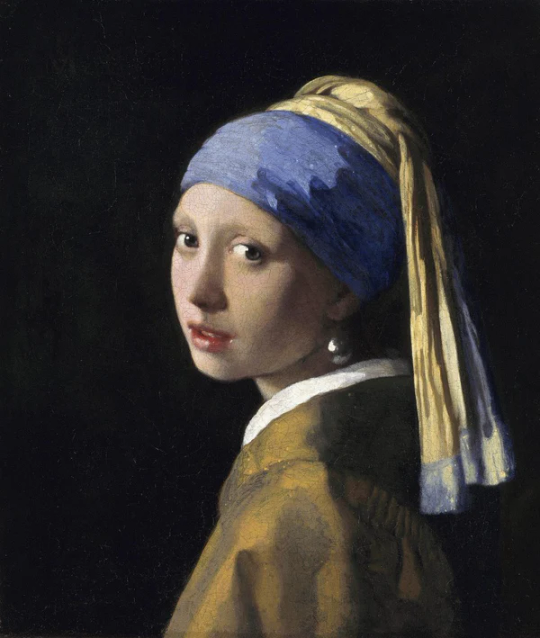
Pale skin was considered a beauty standard for both genders during the Renaissance and Medieval periods. It symbolized wealth and status, as those who could afford to stay out of the sun had the free time to do so. A pale, blemish-free complexion was seen as a symbol of aristocracy and class. This preference for pale skin can be seen in many Renaissance and medieval works of art, where men and women are often depicted with a light, almost translucent complexion. It was seen to be revered and “angelic” to have such pale skin marking you as an individual of high status and closer to divinity.
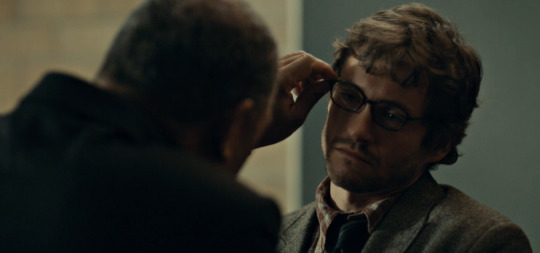

Will is a closed-off man due to how others treat him in his field of behavioral science and federal agents. Hannibal is the first that look at Will not as a basket case but as a muse waiting to be molded. As highlighted in my other post Hannibal had a love for Botticelli and his artwork during the Italian Renaissance. As shown in Dolce with them sitting in the Uffizi gallery surrounded by Botticelli artwork.
He wanted Will to transform into the person he should be, into the person Hannibal envisions him to be. As one Redditor noted they sit in between the portraits of Simonetta and Botticelli. I will explain more about the relationship instead of briefly as this user did.
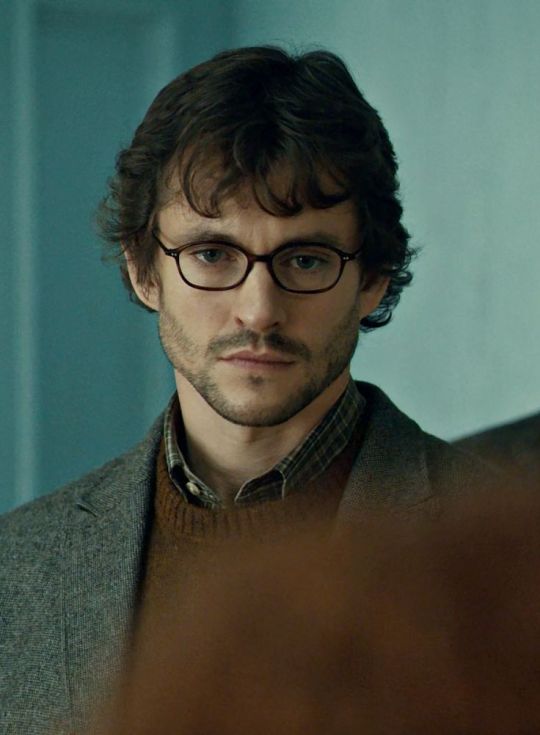

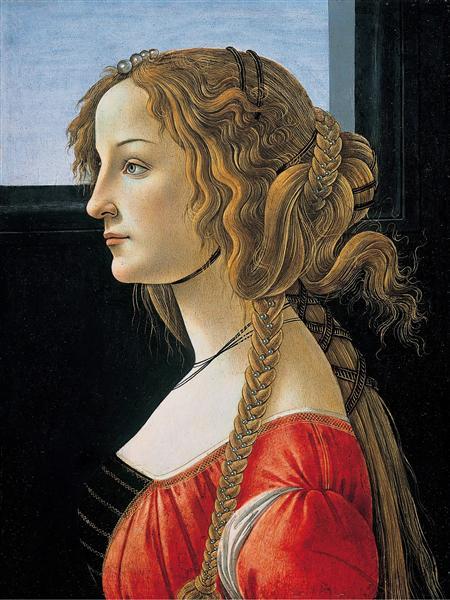

Simonetta Cattaneo Vespucci was a famed Genoese noblewoman married to Marco Vespucci. known for her beauty and charm. She was an inspiration to many artists of the time and had a close relationship with the Renaissance artist Sandro Botticelli.
Botticelli was deeply smitten by Simonetta's beauty and grace. She was the inspiration for many of his works, including "The Birth of Venus," and he included her in many of his paintings. It is often speculated that Botticelli may have even harbored romantic feelings for her.
Botticelli's relationship with Simonetta Vespucci, the inspiration behind many of his famous works, was marked by a deep connection. Their relationship appears to have been akin to that of a muse and artist.
Simonetta Vespucci died in 1476 at the age of 21. The cause of her death is not accurately known, but it is believed to be from complications due to tuberculosis. It is said that Botticelli was devastated by her passing and even refused to paint for several months. He later channeled his grief into his works, creating some of his most beautiful paintings as a tribute to his beloved Simonetta.
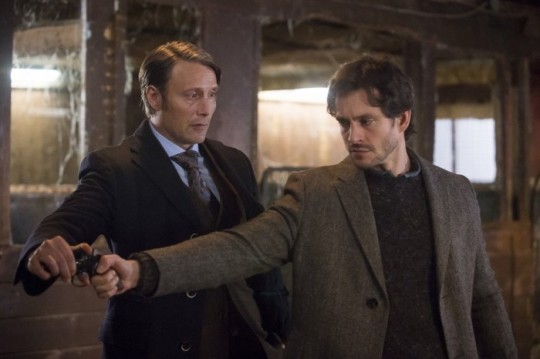
Hannibal sees himself as an artist, in the culinary arts, traditional, psychology and so on. He has the mind of an artist who paints even the people he kills.
Throughout the show, he is often seen creating pieces of art, whether it be culinary masterpieces or gruesome tableau displays. Additionally, his ability to manipulate people and situations to his advantage can be seen as a form of metaphorical art, as he carefully constructs his plans to achieve his desired outcomes.


Like Botticelli, he sees himself as an artist creating his muse which is Will. Botticelli is noted as the themes in his art are biblical and had a great appreciation for Dante Alighieri. No matter how grotesque or unethical it is, it's Hannibal’s way of showing affection.


He is shown to have a deep appreciation and understanding of art and often incorporates elements of art and art history in many of his actions and conversations. He is also shown to have a keen aesthetic sensibility, often using beautiful imagery and metaphors in his interactions. He uses it, especially in sessions or conversations with Will. Additionally, Lecter is depicted as a creator himself, both in the literal sense as he composes music and paints, and more metaphorically as he engages in a creative act in his killings.
Dr. Hannibal Lecter’s attempts to show love to Will Graham are often twisted and manipulative, as his definition of “love” is different from the traditional sense. Throughout the show, Lecter goes to great lengths to get Will’s full attention and admiration, often in harmful and violent ways. He sees Will as his equal and wants to mold him into a partner, someone who can understand him completely. He continuously challenges and tests Will, trying to break him down to build him back up in a way that is acceptable to Lecter.
He is shaping his muse to be his perfect companion. To both worship and eat alive in his dark change.
#nbc hannibal#hannibal#hannibal lecter#will graham#quackerofoatz#hannigram#Tumblr essay#hannibal fandom#hannibal x will#hanniblogging#hannibal tv show#hannibal nbc#murder husbands#asks open#A/n: this took a while to write and will edit if I see errors feel free to ask anything#hannibal analysis#hannibal and will#hannibal comparatives#hannibal essay#hannibal meta#hannibal parallels
94 notes
·
View notes
Text
This is some extremely niche humor, but. So, these two guys, Angelo Poliziano and Pico della Mirandola. Both poets in Renaissance Florence circa 1480-1490. (They were also murdered together in 1494, which no one knew until their bodies were exhumed in 2007, but that’s not involved in this story.)
This is the flirtiest goddamn beta-reading exchange I have ever seen.
(For flavor: These letters were originally written in Latin. The English translation is Shane Butler, 2006; available to read at OpenLibrary.org.)
Pico writes first, enclosing some new love poems he’s written, and asking Poliziano to beta-read for him. He says “Give it to those poems rough.”
Since I have arranged my poetic trifles, by which I made sport of my love affairs for as long as youth allowed, into five books, I am sending you the first of these and intend to send you the rest, provided that in this one I find in you a friend instead of a flatterer.
For they come to you on the strict condition that they be chastised and spanked and that they pay the price for their errors by enduring fingernail and skewers.
Translator notes at this point: “The elaborate (and largely untranslatable) erotic and sadomasochistic humor of this sentence depends on […] two technical terms: the Latin phrase ad unguem, "to the point of being ready for the fingernail," which strictly refers to a carpenter's ultimate test of the smoothness of a join but which was used broadly in Latin to describe the successful finish of any work of art (especially poetry), and the symbol of the "skewer" or "dagger" (†) […] used in textual criticism since antiquity to mark spurious lines of verse.”
In other words, “Yeah, daddy, mark it up good and hard.”
Poliziano replies, enclosing his beta comments:
My, you are a wit to match me with your Loves and to require that such attractive boys be received by me —though I hardly am the type to wear a furrowed brow — with such nasty strictness. They say that Love all by himself challenged Pan, a god, to the ring and threw him on his back. How do you suppose that I can wrestle with Venus’s whole team? Nevertheless, you — yes, you, Pico, who can be refused in nothing, no matter what it is, without gross sacrilege — insist on this. And so I prevailed upon a few of them to endure a little abuse from me. […]
In other words, “Your poems are a whole team of extremely hot twinks, and you asked me to wrestle all of them so roughly, instead of just taking them to bed. But I did it. For you.”
Pico replies, waggling an eyebrow:
My Loves declare that they never have enjoyed a reception more stylish or entertaining than that which greeted them over the course of the past few days at your house. Even as they themselves take full credit for the friendly way in which you did it, they are enormously in your debt for pricking them at all. Yes, who wouldn't want to die on the receiving end of that sword of yours?
WHO
WOULDN'T
WANT TO DIE
ON THE RECEIVING END
OF THAT
SWORD
OF YOURS
!!!!!!
In other words, 🍆💦🍆💦🍆💦
I need to see the entire transcript of their DMs immediately.
#angelo poliziano#pico della mirandola#Renaissance Florence#letters of note#beta reading#ye olde beta reading
21 notes
·
View notes
Text
Rewind the Tape —Episode 1
Art of the episode
During our rewatch, we took note of the art shown and mentioned in the pilot, and we wanted to share. Did we miss any? Do you have any thoughts about how these references could be interpreted? How do you think Armand and Louis go about picking the art for their penthouse in Dubai?

The Fall of the Rebel Angels
Peter Bruegel the Elder, 1562
This painting is featured in the Interview with the Vampire book, and it was important enough to be included in the draft pilot script!

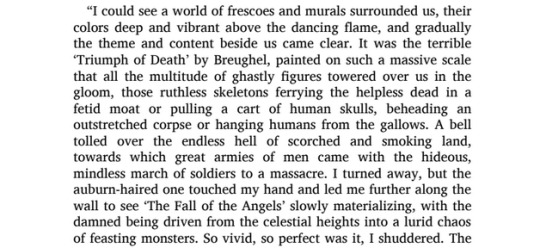
Bruegel the Elder was among the most significant Dutch and Flemish Renaissance artists. He was a painter and print-maker, known for his landscapes and peasant scenes.

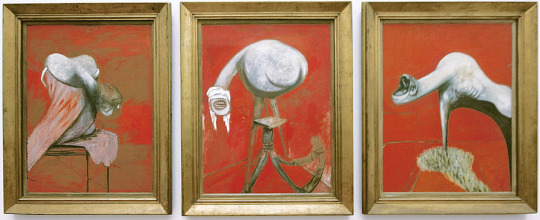
Three Studies for Figures at the Base of a Crucifixion
Francis Bacon, 1944
Bacon was an Irish figurative painter, known for his raw, unsettling imagery and a number of triptychs and diptychs among his work. At a time when being gay was a criminal offense, Bacon was open about his sexuality, and was cast out by his family at 16 for this reason. He destroyed many of his early works, but about 590 still survive. The Tate, where these paintings are displayed, says this about the work: "Francis Bacon titled this work after the figures often featured in Christian paintings witnessing the death of Jesus. But he said the creatures represented the avenging Furies from Greek mythology. The Furies punish those who go against the natural order. In Aeschylus’s tragedy The Eumenides, for example, they pursue a man who has murdered his mother. Bacon first exhibited this painting in April 1945, towards the end of the Second World War. For some, it reflects the horror of the war and the Holocaust in a world lacking guiding principles."
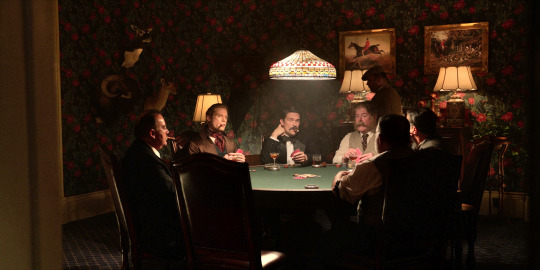
On the Hunt or Captain Percy Williams On A Favorite Irish Hunter and Calling the Hounds Out of Cover
Samuel Sidney, 1881 [Identified by @vfevermillion.] and Heywood Hardy, 1906 [Identified by @destinationdartboard.]
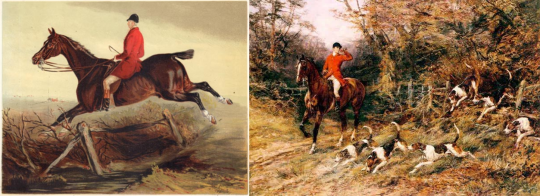
Sidney was an English writer, and his prints usually accompanied his publications about hunting, agriculture, and about settling Australia during the colonial period. Hardy, also British, was a painter, in particular an animal painter. There's also a taxidermy deer, ram, and piebald deer on the wall.
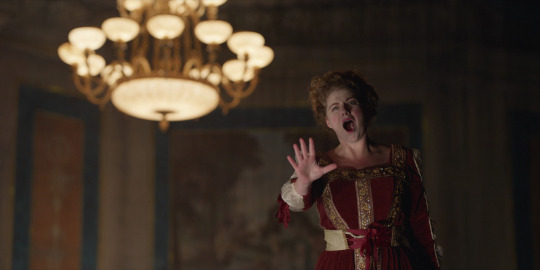
Iolanta
Pyotr Tchaikovsky, 1892
The opera Louis and Lestat go to was composed by Tchaikovsky, another gay artist. The play tells a story "in which love prevails, light shines for all, lies are no longer necessary and no one must fear punishment," as put by Susanne Stähr for the Berliner Philharmoniker.

Strawberries and Cream
Raphaelle Peale, 1816 [Identified by @diasdelfuego.]
Peale is considered to have been the first professional American painter of still-life.

Outfits inspired by J.C. Leyendecker
Leyendecker was one of the most prominent and commercially successful freelance artists in the U.S. He studied in France, and was a pioneer of the Art Deco illustration. Leyendecker's model, Charles Beach, was also his lover of five decades. You can read costume designer Carol Cutshall's thoughts on these outfits on her Instagram.

The Artist's Sister, Melanie
Egon Schiele, 1908 [Identified by @dwreader.]
Schiele was an Austrian expressionist painter and protege of Gustav Klimt. Many of his portraits (self portraits and of others) were described as grotesque and disturbing.
A Stag at Sharkey's
George Wesley Bellows, 1909 [Identified by @vfevermillion.]
Bellows was an American realist painter, known for his bold depictions of urban life in New York City.

Mildred-O Hat
Robert Henri, undated (likely 1890s) [Identified by @nicodelenfent, here.]
Henri was an American painter who studied in Paris, where he learned from the Impressionists and determined to lead an even more dramatic revolt against American academic art.
Starry night
Edvard Munch, 1893 [Identified by @vfevermillion.]
Munch was a Norwegian painter, one of the best known figures of late 19th-century Symbolism and a great influence in German Expressionism in the early 20th century. His work dealt with psychological themes, and he personally struggled with mental illness.
If you spot or put a name to any other references, let us know if you'd like us to add them with credit to the post!
Starting tonight, we will be rewatching and discussing Episode 2, ...After the Phantoms of Your Former Self. We hope to see you there!
And, if you're just getting caught up, learn all about our group rewatch here ►
#louis de pointe du lac#daniel molloy#lestat de lioncourt#vampterview#interview with the vampire#iwtv#amc interview with the vampire#interview with the vampire amc#amc iwtv#iwtv amc#IWTVfanevents#rewind the tape#in throes of increasing wonder#analysis and meta#art of the episode
97 notes
·
View notes
Text
Stańczyk by Jan Matejko (1862)
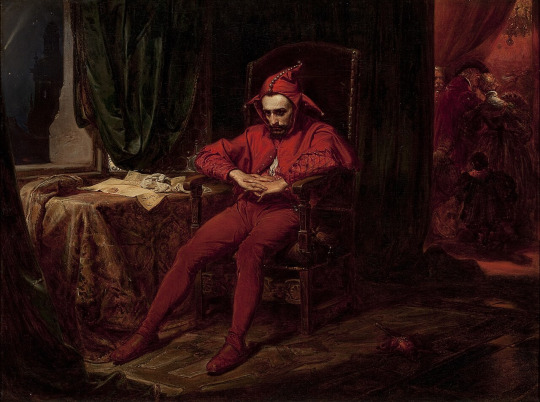
Description from Britannica (author: Ann Kay)
Stańczyk, oil painting created in 1862 by Polish artist Jan Matejko. It is one of Matejko’s best known works and is an iconic image in Poland.
Historical painting has always been a vital thread in Polish art, and Matejko chronicled Polish history with a verve and romance that earned him a central place in his homeland’s artistic consciousness. Court jester to several Renaissance-era Polish kings, Stańczyk was said to be a man of extraordinary wisdom. Not afraid to wield his satirical wit to criticize those in power, he came to personify the fight for truth over hypocrisy and even Poland’s struggle for independence.
In this painting, Matejko has turned the jester into a symbol of his nation’s conscience. While a ball at the court of Queen Bona (wife of Sigismund I the Old) is in full swing, Stańczyk sits slumped in depression, having just discovered—presumably indicated by papers on the table—that the Polish city of Smolensk has been lost (1514) during war with Moscow. Seating him apart from the rest of the court emphasizes that only he foresees that the war will be disastrous for Poland.
Matejko’s characteristic theatricality and lighting make the painting appear like a scene from a play. The principal player, in a fanciful costume that highlights his seriousness by its contrast, is placed centrally in a spotlight. In the wings, we glimpse the bit players, while outside a window a comet falls portentously. The face is a self-portrait of Matejko himself, and the artist’s finely detailed style adds to the mood, picking out everything from the plushness of the drapes to the distant sparkle of a chandelier. For centuries Stańczyk featured in the work of an array of Polish artists and writers, but this striking image is the one that has endured.
ABOUT THE AUTHOR -
Ann Kay is a writer and editor with a degree in the history of art and literature at Kent University and a postgraduate qualification in graphic design from London University. She has also studied book design and jewelry-making. Her work appears in Encyclopaedia Britannica as part of a joint publishing agreement with the publisher of 1001 Paintings You Must See Before You Die and 1001 Amazing Places You Must See Before You Die, where the work originally appeared.
#history#history of art#art history#art hoe#art#classical art#artists on tumblr#stańczyk#stanczyk#poland#polish art#polish tumblr#polish history#polska#polishposting#polblr#wroclaw#germany#central europe#warszawa#krakow#europe#european history#european art#political angst#political art#global politics#politics#polish politics#polish painters
70 notes
·
View notes
Text

detail of book held by saint margaret in a work by sassetta, c. 1435 (BASIRA)
3 notes
·
View notes
Text

Occult and esoteric imagery, circa 17th century
#witchy#occult#esoteric#engraving#etching#illustration#monotone#monochrome#witchcraft#witchy things#old art#artwork#gothic#alchemy#medieval#renaissance#pagan#old books#Elizabethan#dark art#snake#symbolism#mystical#mysticism#hermetic#line art#astrology#old gods#folklore#whimsigoth Art
34 notes
·
View notes
Note
I don't think we can expect everyone to know a lot about art on a deep level, but I do miss more info in art museums. If there are texts I find that they tend to be very surface level. I think it would be nice if either there just was given more info on the plaques in the museums, or that there would be also a sort of digital tour you could follow on your phone where you could access the info. The digital tour on your phone gives you the possibility to give way more info than you would ever put on a plaque in a museum and you don't have to try to read it with 7 people at once. I just remember that two summers ago I was walking through the National Gallery in London constantly looking up paintings and the historical events/stories they depicted. I do think, with the internet in our pockets, that the people who are interested have so much more access to art and info about them, but I still think that for permanent expositions museums could put in some more effort.
Having info about the painter, the event/story depicted, the symbolism (or interpretation of it), and some info about the materials used per painting would be nice, but I am also aware that that would end up being a huge amount of work. Non-academic people just often don't have access to academic publications, or simply don't know how to access them (I'm writing here in English, and in my experience publications in English are way easier to find for free in some way than those in Dutch, German or French, at least those I've needed, but you still don't find everything).
Interesting! There is an ongoing critical restructuring of the art museum, as they grapple with changing the ways they function. being colonial institutions invented to create a civilizing effect for the uneducated masses who suddenly are no longer at work 15 hours a day is pretty bad, right? the 18th century ruling class was extremely worried about what poor people would do with all the new leisure time + human rights they had gained after all those pesky revolutions. so enter the public, free, national art museums.

This crucial book by Duncan first criticized national art museums as a ritual space to replace the power that the church used to have: you get dressed up nicely, walk into a museum and perform an act of pseudo-worship by ascending up the giant steps, you follow a map that leads you from one room to the next, in chronological order with Italian renaissance art as the most valuable in this little micro world, and the other cultures ranked lower (looted african art at the very bottom, unless its with a picasso). You speak quietly, never point, don't stand too closely, follow the map, and NEVER run. if you step out of this order, the guards and the other guests will get angry and yell to correct you.
The museum takes the low uneducated dirty working class and teaches them how to act proper through a civilizing ritual.
Last night I told my friend a story Barbara Kruger mentions on Katy Hessel's podcast, that she gained her visual culture education in the lowest way possible, in a basement as one of the copy-paste girls who put the ads together at conde nast.


She wanted to go to museums and teach herself more about art, but felt like she could never feel clean enough to go in, her clothes felt too dirty and old. she felt like she needed to be lint rolled first. Many of my students feel exactly the same, "I can't go to the museum in sweatpants"
As a museologist, there's an idea of removing this authoritative condescendingness to art museums, and that starts by making didactics have as little of the curator's voice as possible, with just a tombstone. I'm trained to look at an artwork and immediately know the things you mentioned: the era, materials, iconographies, and the artists biography. communicating that to a student takes an entire hour every week. I do not look at didactics because I already have immediate basic info and context of every artwork, and I want to spend my time looking at the art itself. About 1% of this info is available on google/wiki.
You think museums should have a digital didactic for each object in a permanent collection? That'd be a fun initiative, essentially digitizing the work of the docent educator.
How would you feel about other visitors, instead of lining up to read a long didactic, were lining up to look between their phone and the art for a 10+ mins lecture that theyre playing at volume level 100?
Now how do you feel when I tell you the British Museum alone has over 8 million objects in its permanent collection, and doing a digital explanation for each one would take centuries if every qualified artist historian in the world worked on it.
To bring up Katy Hessel again: she does a great job at bridging this gap! She only has an undergrad level of understanding art but that actually makes her a great art communicator and instagram docent, she explains really basic things every art historian already knows, the 1% of art history you get on wikipedia but through her great voice. Museums Without Men accomplishes what you propose on a one woman level; an audio guide to the best women artists in a museum collection:

24 notes
·
View notes
Note
How did you come to draw and paint the way you do? What inspirations do you pull from? All of your art oozes with some strange, almost ethereal emotion I've not quite seen anywhere else, something similar to what I'd like to capture with my own works.
I’ve always had a bit of a hard time answering this bc like…I honestly think aesthetic/inspirational/taste stuff is a library you build up over your whole life, or maybe a closet that you try things on to see what does and doesn’t work for you. My biggest advice to this kinda stuff is to experiment a lot and take in a lot of media in a purposeful way, and try to actively apply things you like about said medias to your work. And don’t just consume stuff within your field, I take inspiration from a ton of stuff that isn’t art. I also recommend having somewhere to keep a kind of reserve of inspo, wether it be on tumblr or Pinterest or what have you.
So with that being said I’ll try to sum up what I can about myself.
I’m a horror lover, have been since I was (too) young. I’ve consumed a ton of horror movies, read a lot of books, and certainly have digested a lot of art about it. I am a bit of a haunted person haha, and I’ve always really attached myself to horror, and with some exception to just purely cute stuff I truly am always thinking about it with my work. I am not really aiming to make people feel comfortable with my stuff, in fact often the opposite, but many feel understood anyways which feels nice. I don’t think horror for horrors sake is always as fufilling to me, it always pulls from something internal that I’ve been wrestling with or are afraid of myself.
I am classically trained in fine art due to the kind of art program my highschool had (magnet program if that means anything to anyone), it was incredibly good and I always feel so lucky I got to go there. Bc of this I learned a lot of techniques in painting as well as the fundamental of art. I don’t think my art would be the way it is without this training, but I also think with how the internet is now you can probably do the same thing at your own pace, just have to be dedicating a decent amount of time and mental energy into it.
Bc of my highschool training I also learned about art history, which had a big impact on me, particularly renaissance, baroque, and rococo. Religious imagery as well had a huge impact on me, particularly catholic (probs cause we learned about it it the most). I would say doing master studies with these would be a huge help.
I would say it’s important to me that each “full” illustration tells a story of sorts, I can’t really help it, I’m a story teller at heart. I use a lot of symbolic imagery, I pull a lot from religious imagery but also within fruit, flowers, personal objects… I think “what am I trying to say with this work” and kind of go from there with what I choose. Make your own personal symbolism language.
There’s like this certainty digital painting aesthetic I really enjoy by niche furry artist lol, many of them really nsfw so I don’t feel comfortable linking to them. It’s like…highly detailed well rendered pieces that they make with literally one brush that is often without any kind of pen pressure, just layering things with opacity. It’s crazy and yeah idk they’re definitely up there in inspo for me.
I really really care about fashion. Lolita was my first love in terms of clothing, and I pull a ton of inspiration from it, but also a lot of other street styles and runways stuff. I like drama and frills.
I play with my art and stories in a way that I don’t know how to describe other than childlike. It’s important for me to do so in my process, but basically, I let my imagination run wild, I talk to my characters, I listen to music and think about them. A lot of my bigger pieces take a lot of time of me thinking about them ahead a time, I draw in my head a lot. Sketchbooks are a huge help in this.
I thiiiiiink that’s all I have to say for now…I could probably list a million things but this feels like a good core to start with. I hope it’s not too vague, but I’m always good to keep answering stuff like this if you wanna know about one part in depth.
44 notes
·
View notes
Text

Artemisia Gentileschi (1593 c. 1656): Judith Beheading Holofernes, 1611, oil on canvas, 158,8 x 125,5 cm, Museo Nazionale di Capodimonte, Naples.
Artemisia Gentileschi (c. 1593-1656) was the daughter of Orazio Gentileschi, a follower of Caravaggio. She is widely regarded as the most accomplished female painter of the 17th century. After a scandal in Rome involving a rape case she brought against the landscape painter Agostino Tassi, Gentileschi moved to Florence. This case, which ended with Gentileschi's humiliation, is now seen as a symbol of the violence women have endured throughout history.
The scene of Judith beheading Holofernes has been a popular subject in art since the early Renaissance, as part of a group of subjects called the Power of Women. Caravaggio's 'Judith Beheading Holofernes' is believed to be the main source of inspiration for Gentileschi's work, as his influence is evident in the naturalism and violence she brings to her canvas.
The painting depicts an episode from the Book of Judith, which is not considered canonical by Christian Churches and Jews. It tells the story of the assassination of the Assyrian general Holofernes by the Israelite heroine Judith. Gentileschi's painting shows the moment when Judith, helped by her maidservant, beheads the general after he has fallen asleep drunk.
The painting is strikingly physical, with wide spurts of blood and the energy of the two women as they carry out the act. The effort of their struggle is most finely represented by the delicate face of the maid, who is grasped by the oversized, muscular fist of Holofernes as he desperately struggles to survive. Although the painting depicts a classic scene from the Bible, Gentileschi drew herself as Judith and her mentor Agostino Tassi, who was tried in court for her rape, as Holofernes.
-
Artemisia Gentileschi (1593 c. 1656): Judith Holofernes'i Boynunu Kesiyor, 1611, tuval üzerine yağlı boya, 158,8 x 125,5 cm, Museo Nazionale di Capodimonte, Napoli.
.
.
Caravaggio'nun takipçisi Orazio Gentileschi'nin kızı olan Artemisia Gentileschi, 17. yüzyılın en yetenekli kadın ressamı olarak kabul edilen, Roma'da peyzaj ressamı Agostino Tassi'ye karşı tecavüz davası açtıktan sonra skandalı kaçmak için Floransa'ya taşındı. Bu dramatik olayın, Artemisia'nın aşağılanmasıyla sonuçlanan şekilde öngörülebilir bir şekilde sonuçlanması belgelerle kanıtlanmıştır ve bugün kadınların yüzyıllardır maruz kaldığı şiddetin sembolü olarak kabul edilir.
Judith'in Holofernes'i boynunu kesme sahnesi, Kadınların Gücü adı verilen konu grubunun bir parçası olarak erken Rönesans'tan beri sanatta popüler olmuştur.
Caravaggio'nun 'Judith Holofernes'i Boynunu Kesiyor' adlı eseri, bu çalışmanın ana kaynağı olduğuna inanılır ve Gentileschi'nin tuvaline getirdiği doğalcılık ve şiddet etkisi görülebilir.
Konu, Hristiyan Kiliseleri ve Yahudiler tarafından genellikle kanonik olarak kabul edilmeyen Judith Kitabı'ndan bir bölümü ele alır. İsrailli kahraman Judith'in Asur generali Holofernes'i öldürmesini anlatır. Tablo, Judith'in hizmetçisi tarafından yardım edilerek, general sarhoş uyurken onu boynunu keserkenki anı gösterir.
Tablo, geniş kan püskürtmelerinden, iki kadının eylemi gerçekleştirdiği enerjiye kadar acımasızca fizikseldir. Kadınların mücadelesinin çabası, Holofernes'in umutsuzca hayatta kalmak için kavradığı, büyük ölçekli, kaslı yumruğu tarafından en iyi şekilde temsil edilen hizmetçinin narin yüzüyle gösterilir. Tablo, Kutsal Kitap'tan klasik bir sahneyi tasvir etse de, Gentileschi, kendini Judith olarak çizmiş ve ona tecavüz davası için mahkemede yargılanan mentörü Agostino Tassi'yi Holofernes olarak tasvir etmiştir.
#artcore#art aesthetic#dark academia#illustration#artwork#artists on tumblr#art tag#art history#black art#art style#art process#old art#old architecture#painting#art#oil on canvas#oil painting#classical art#romantic academia#light academia#classic academia#fairycore#princesscore#museumcore#aesthetic#classic academia aesthetic#academia aesthetic#artist#artblr#renaissance painting
119 notes
·
View notes
Text
Putting this here for future me as a cross-ref between book and show for Vampire Art History essay, Armand & Renaissance art, Louis & the 20th century and non-representative forms--ACTUALLY. Put a pin in this for later, sidenote, bracket, because I REALLY want to see how they adapt Armand's significant and symbolic connection to religious art (Orthodox icon painting) as a throughline to Renaissance art and Christian representative (if not strictly realist) aesthetics when show!Armand comes from a religious tradition that prohibits graven images. Rupture instead of continuity, which will underscore the colonialism aspect they are no doubt going to develop. ANYWAY. This passage from IWTV: The Book and their prissy gay argument about what to hang on the wall after selling the Bacon triptych

#I will get to use Stefania's work in this essay which is exciting#Because she did her PhD in early Renaissance architecture and write a lot about Renaissance art#Vampire Art History#Thinking. About vampires
7 notes
·
View notes